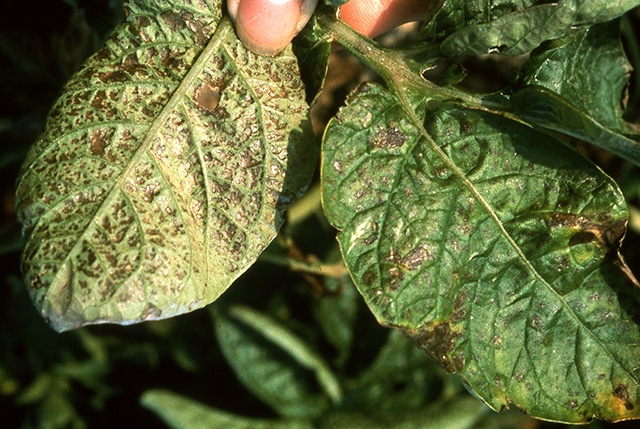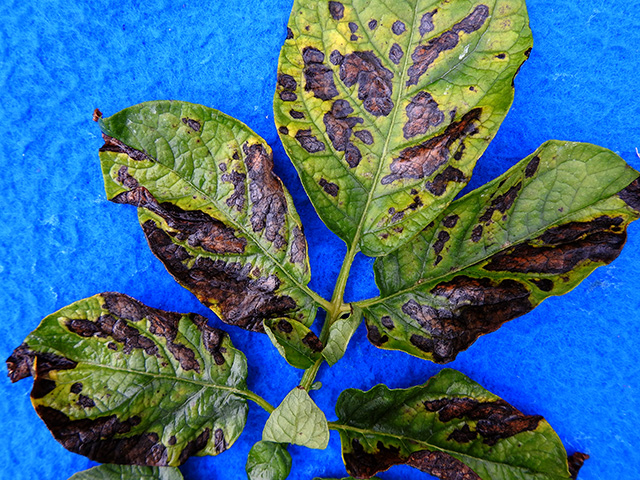Brown tissue between veins suspected due to exposure to high ozone has been observed in potato on Long Island. Damage typically is most visible on the underside of leaves. It is called bronzing because it often has a shiny appearance visible by slowly moving a leaf side to side while exposed to light. Varieties differ in susceptibility. Norland is one of the most susceptible.
Extensive bronzing was observed in some potato crops in 2017. Potato varieties are known to vary in susceptibility. In mid-June there were 4 days (June 10-13) when ozone was high. The eight-hour ozone averages were 69, 72, 89 and 88 ppb, respectively. Potato plants at that time on Long Island typically are in an actively-growing, susceptible phase. And environmental conditions likely were good for growth with adequate soil moisture (rain occurred 4-5 days before the start of this high ozone episode) and solar radiation being high while ozone was high.
See also:
- Photographs of injury observed on Long Island in beans, cucurbits, and tomato.
- Information about ozone in New York and its impact on plants. This webpage has information about research conducted at LIHREC.
Page created by Margaret T. McGrath




